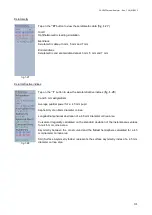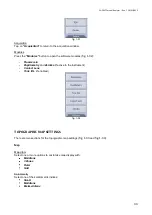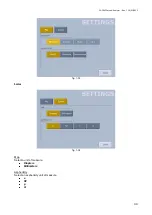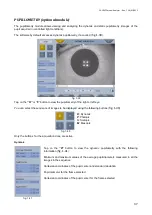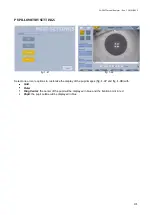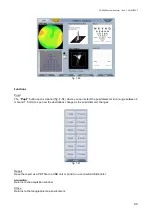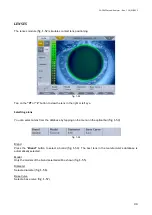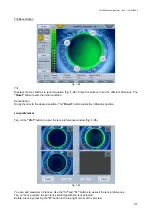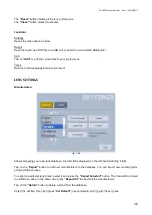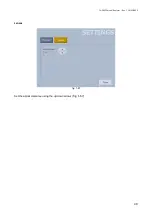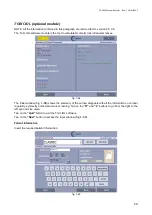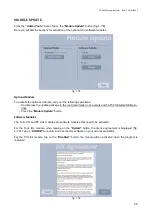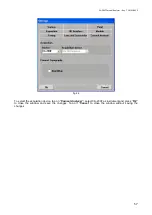
CA-200F Corneal Analyser - Rev. 7 16/01/2012
42
ZERNIKE (included with pupillometry module)
The Zernike module allows full display of the wavefront aberrations generated by the front surface of the
cornea. The results of the Zernike analysis are displayed by means of numerical indices and graphic
representations (
fig. 1-49
Tap on the
“R”
or
“L”
button to view the Zernike analysis results for the right or the left eye.
When the module is started, the aberration maps are displayed:
OPD map: shows the map of the total aberration which corresponds to the sum of all the aberration
components and the RMS value which allows quantifying the deviation with respect to an ideal
wavefront.
Zernike expansion coefficient histograms: each histogram represents the weight of the
corresponding polynomial.
Primary aberration maps:
Astigmatism: shows the map, the entity of diopters, the axis and the RMS value;
Spherical aberration: shows the map, the amount of longitudinal spherical aberration in
diopters and the RMS value;
Coma: shows the map, the RMS value and the direction;
High order aberrations: groups all the components of a higher order than the primary
components; shows the map and the RMS value.
Tap on
“Graphs”
at the top left to view the summary of the visual quality (
In this window you can view:
OPD map;
Pyramid of Zernike coefficients: represents the numerical value of each coefficient on a scale of
grey; the greater the coefficient the greater the color contrast with the background of the pyramid;
Point Spread Function: represents the intensity of the wavefront in the retina;
Spot Diagram: represents the space distribution of the wavefront on the retina;
High and low contrast optotypes: represent the actual sight of the patient.
Press the
“Maps”
button to return to map display.




